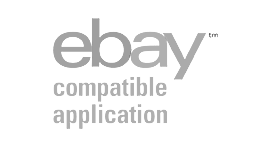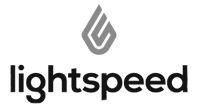The majority of businesses are trialing chatbot software right now. But does one-size-fit-all when it comes to automation? At best, chatbots provide the quick, 24/7 experience that customers demand. At worst, they frustrate the customer, sending them straight to a competitor’s website. The key to finding the right chatbot strategy lies in knowing the technology’s strengths and limitations (and not being overpromised on what bots can accomplish).
For most companies doing business online, chatbots are the go-to tool to infuse automation into the customer experience. We’re living in the era of the “NOW Customer” (the consumer who expects a rapid-fire, on-demand experience at every turn), so it’s no wonder that brands are grasping at bots to scale speedy customer support.
While chatbot software has its strengths, it can cause dangerous problems for businesses when used incorrectly or implemented in haste. On top of that, many chatbot software companies overpromise on just how “conversational” a bot can be, when studies prove again and again that customers hate useless chatbots but don’t mind at all when they’re integrated with helpful human assistance.
The reality is that chatbots can do great things for the customer experience, but they can’t do it alone.
What to expect in this article
In this article, we’ll provide insight on the two types of chatbots and the companies that provide chatbot software, including:
- Ada
- Answerbot
- Gorgias Automation
- Thankful.ai
- Solvvy
- Simplr
- Zendesk
Additionally, we’ll outline the pros and cons of chatbot software and the questions every business decision-maker should ask themselves before investing in a bot-only customer service strategy.
In understanding the 2021/2022 chatbot software space, you can make an informed decision about how your company can add (or supplement existing) automation in a way that positively engages customers and drives revenue for the business. Win-win!
What is chatbot software?
Chatbot software is a technology or platform used to run an automated live chat service. It enables chatbots to stimulate conversation with human users on a business’s website, social media platforms and messaging apps These vertices provide true omnichannel shopping experiences; they’re also the preferred communication channels of Generation Z.
What are the different types of chatbots?
There are two types of chatbot automation: conversational autoresponse bots and self-service. Each type of chatbot serves its own purpose in a customer service strategy. An alternative to chatbot automation is a distributed network of human agents guided by AI technology, such as Simplr’s Human Cloud Network.
It’s important to understand what the different bots can (and can’t!) do before committing to a chatbot software provider.
- Conversational Autoresponders
Conversational bots can be implemented via both email and chat with a goal of delivering fast responses to customers. They allow customers to ask free-text questions and elicit dialogue-based responses by analyzing the question and it’s intent. Thankful.ai and Gorgias are companies that provide this type of automation.
- Self-Service
Self-service chatbots can be implemented via chat and are always on to deliver immediate responses to customers. At a basic level, self-service bots provide one-touch responses to customer questions by directing them to a pre-loaded FAQ or link to a help article. Companies like Zendesk, Answerbot, and Solvvy provide this type of service. Facebook Messenger was also an early adopter in this space.
More sophisticated self-service solutions strive to be conversational and use multi-step decision trees to guide customers towards a resolution as well as collect and aggregate important customer data. This functionality can be found with providers such as Ada and Amazon’s chatbot.
What are the benefits of chatbot software?
There are three primary benefits that chatbot technology provides for a business: speed, availability, and resource efficiency.
- Speed: chatbots are able to provide responses to customers quickly, with little to no wait time. This is a key factor (but not the only one) in winning over the NOW Customer and improving overall CX metrics. Chatbots work equally well whether a customer is on a mobile device or a desktop.
- Availability: chatbots allow for 24/7 customer service, without staffing or planning. Self-service solutions allow customers to get answers to their questions without speaking directly to a representative, which some customers prefer (especially for post-sale inquiries around order status and return policies).
- Resource efficiency: chatbots reduce ticket volume that goes directly to internal agents. As a result, the need for brands to hire additional staff decreases. Bots can also be helpful for collecting information about an inquiry up front and, when set up correctly, are able to route that information to an agent. This saves them time and elicits a faster customer response. Additionally, they handle inquiries at a lower cost than representatives (this may not be appealing to brands that see CX as a revenue generator and not a cost center).
What are the challenges with automation and chatbot software?
We’ve identified three critical weaknesses associated with automation and chatbots for 2022: low Actual Resolution Rate, poor customer experience, and setup and ongoing maintenance. Brands must understand these gaps when being sold chatbot software.
- Low Actual Resolution Rate: most chatbots and automation solutions have significantly lower actual take rates and resolution rates, and higher escalation rates than they claim. Higher escalation rates also mean increased costs as inquiries that can’t be resolved by a bot require an internal agent to step in.
- The 2019 Forrester report on chatbots cautions that “…chatbots may need months of care and feeding before they’re able to handle a meaningful proportion of inbound inquiries ”
- Poor customer experience: while many bots and automation solutions claim to be “conversational,” most if not all lack the ability to deliver truly personal, empathetic, one-to-one interactions that customers love and crave. That’s not good for resolutions or conversions! Most of us know that from interacting with chatbots in the past year!
- Forrester found that most chatbots and automation solutions “…make no attempt to infuse their messaging with AI and make it conversational.” This leaves customers feeling frustrated and often without an answer to their question.
- Setup & ongoing maintenance: chatbots and automation solutions require a significant amount of cross-functional collaboration and investment into setup, maintenance, and tuning. Brands must map out and set up flows and decision paths for any and all potential questions and scenarios they want their bot to handle in order for their bot to work. These initiatives can last several months and elicit high costs due to staff and continued upkeep and maintenance.
Alternative to chatbots: Human Cloud Network + NOW CX
On-demand, human-first technology is the latest in disruptive customer service, and a cornerstone of the NOW CX movement. Guided by artificial intelligence technology, humans are able to respond to a company’s digital inquiries around the clock. The technology-human blend ensures that brands maintain impeccable quality and resolution times… at scale.
5 questions to ask yourself while evaluating chatbot and marketing botsoftware providers
Use the following questions to help guide your team through the chatbot software evaluation process.
- How do you know whether or not customers who interact with your self-service bot are actually getting the customer satisfaction they expect from the answers?
- Are you prepared to dedicate time and effort to maintaining the bots extensive knowledge base in order for it to run effectively?
- Are you prioritizing customer effort when it comes to conversations with your brand?
- What would be the impact on your customer experience if and when autoresponders are unable to accurately get customers the answers they need?
- How much time are you willing to spend investing in setting up and fine tuning a solution? How quickly do you need/expect to see value from a customer service solution?
Find the automation that works for you
Selecting a chatbot software provider can be a daunting task. While automation solutions may provide great speed to response, and reduce costs by deflecting volume away from customer service representatives, they often miss the mark resulting in escalations to internal representatives, more friction in their experience, and higher overall customer effort.
If you’re interested in outsourcing customer service to meet your growing CX needs or exploring chatbot alternatives that provide 24/7 human support, talk to Simplr.
Sounds too good to be true? See how Simplr helped some of today’s most innovative brands including Happiest Baby, ANINE BING, and Princess Polly convert more customers and provide premium omnichannel experiences with round the clock live chat support by real humans.
About the Author

Julia Luce is the senior manager of content marketing at Simplr. As a champion for NOW CX, Julia helps brands navigate today’s customer experience landscape through trends reports, mystery shops, and interviews with leaders in the industry. Prior to joining Simplr, Julia worked as a freelance writer for professional and lifestyle outlets. She lives in Nashville, TN.






This blog is very informative and helpful. Thanks for sharing